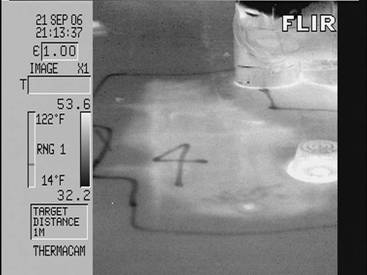IR Inspections of Smooth Surfaced Roof
Sponsored by:

IR Inspections of Smooth Surfaced Roofs
Tip written by: Infraspection Institute
Having the right tool for the job is often essential for success. When performing infrared inspections of smooth-surfaced roofs, a short wave thermal imager can significantly outperform a long wave imager.
Smooth-surfaced roofs, both single-ply and built-up, can present significant challenges during an infrared inspection due to reflectivity of the roof membrane. Should reflectance be sufficiently high, areas of latent moisture may be undetectable to a thermal imager.
Most infrared inspections of flat or low slope roofing systems are conducted at night by walking across the roof surface using a handheld thermal imager. This technique often results in a relatively shallow viewing angle thereby lowering the emittance of the subject roof membrane.
Depending upon site conditions and roof materials, roof membranes can appear to be as reflective as polished metal surfaces. Membrane reflectivity will be especially noticeable on cool, clear nights that permit the cold night sky to be reflected from the roof surface. It will also be significant on roofs that have been coated with aluminum paint.

moisture beneath smooth single-ply membrane.
SW imager reduces reflections from roof membrane.
To this day, the most practical way to deal with the reflectivity of smooth roof membranes is to utilize a thermal imager with short wave (2 to 5.6 micron) spectral response. This will help to eliminate reflections from the roof and can significantly increase inspection accuracy. Although long wave imagers can be used for smooth membranes, they can significantly understate the size of moisture-damaged areas or miss them entirely.
Infrared inspections of low slope roofs is one of the many topics covered in the Level I Infraspection Institute Certified Infrared Thermographer® training course. For information on thermographer training and certification, visit us online at www.infraspection.com or call us at 609-239-4788.

